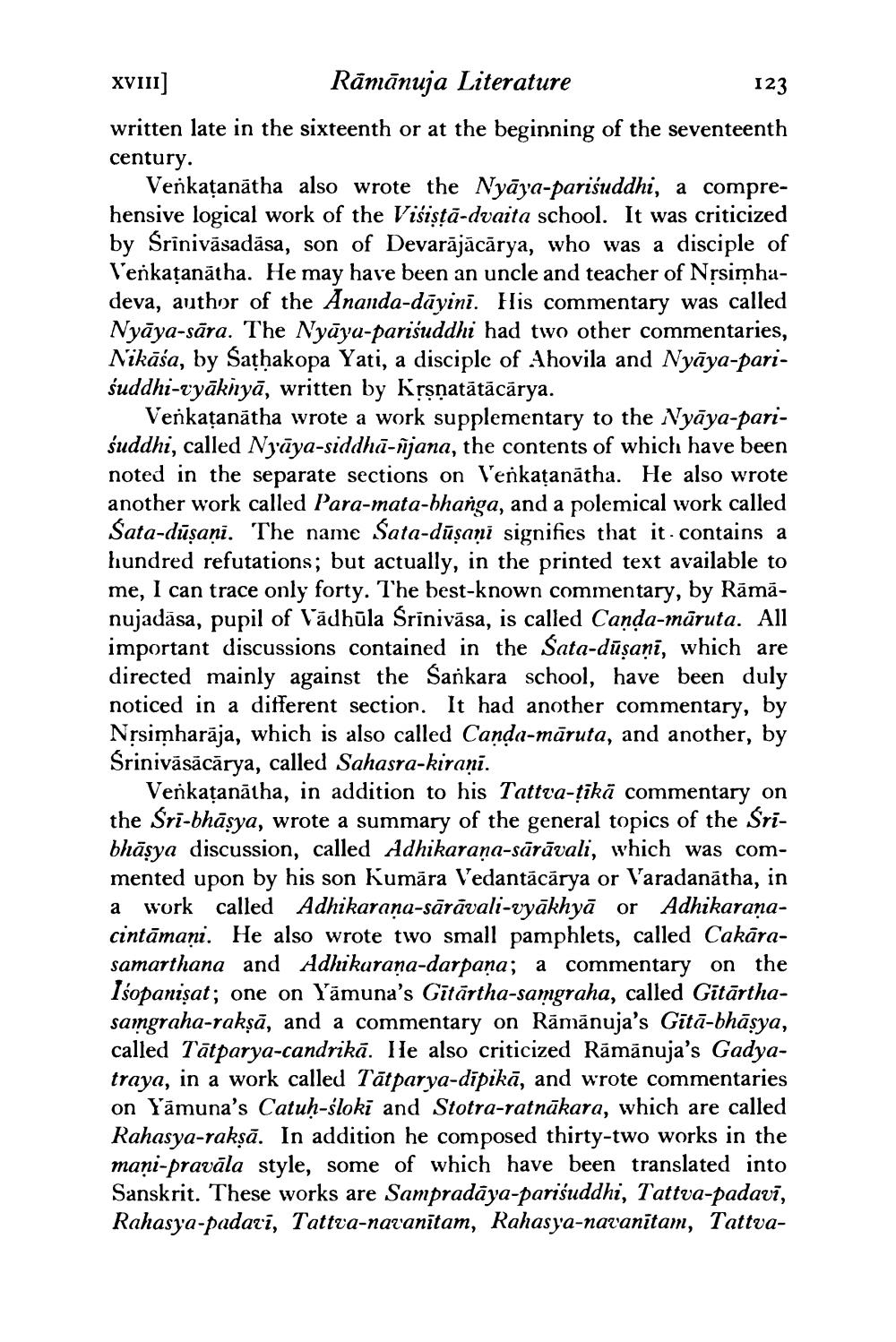________________
XVIII) Rāmānuja Literature
123 written late in the sixteenth or at the beginning of the seventeenth century.
Verkațanātha also wrote the Nyāya-parisuddhi, a comprehensive logical work of the Višistā-dvaita school. It was criticized by Srinivasadāsa, son of Devarājācārya, who was a disciple of l'enkațanātha. He may have been an uncle and teacher of Nộsimhadeva, author of the Ananda-dāyini. His commentary was called Nyāya-sāra. The Nyāya-parisuddhi had two other commentaries, Nikāša, by Sathakopa Yati, a disciple of Ahovila and Nyāya-pariśuddhi-ryākiyā, written by Krsnatātācārya.
Venkatanātha wrote a work supplementary to the Nyāya-pariśuddhi, called Nyāya-siddhā-îījana, the contents of which have been noted in the separate sections on Verkațanātha. He also wrote another work called Para-mata-bhanga, and a polemical work called Sata-dūşaņi. The name Sata-dūşani signifies that it contains a hundred refutations; but actually, in the printed text available to me, I can trace only forty. The best-known commentary, by Rāmānujadāsa, pupil of Tādhūla Srinivasa, is called Canda-mūruta. All important discussions contained in the Sata-dūṣaṇī, which are directed mainly against the Sankara school, have been duly noticed in a different section. It had another commentary, by Nrsimharāja, which is also called Canda-māruta, and another, by Srinivāsācārya, called Sahasra-kirani.
Verkațanātha, in addition to his Tattva-ţikā commentary on the Sri-bhāsya, wrote a summary of the general topics of the Sribhāsya discussion, called Adhikaraṇa-sārāvali, which was commented upon by his son Kumāra Vedantācārya or Varadanātha, in a work called Adhikarana-sārāvali-vyākhyā or Adhikaranacintāmaņi. He also wrote two small pamphlets, called Cakārasamarthana and Adhikarana-darpana; a commentary on the Isopanişat; one on Yāmuna's Gītārtha-samgraha, called Gītārthasamgraha-rakṣā, and a commentary on Rāmānuja's Gītā-bhāșya, called Tātparya-candrikā. He also criticized Rămānuja's Gadyatraya, in a work called Tātparya-dipikā, and wrote commentaries on Yamuna's Catuh-sloki and Stotra-ratnākara, which are called Rahasya-rakṣā. In addition he composed thirty-two works in the mani-pravāla style, some of which have been translated into Sanskrit. These works are Sampradāya-parisuddhi, Tattva-padavi, Rahasya-padarī, Tattva-navanītam, Rahasya-navanītam, Tattva




